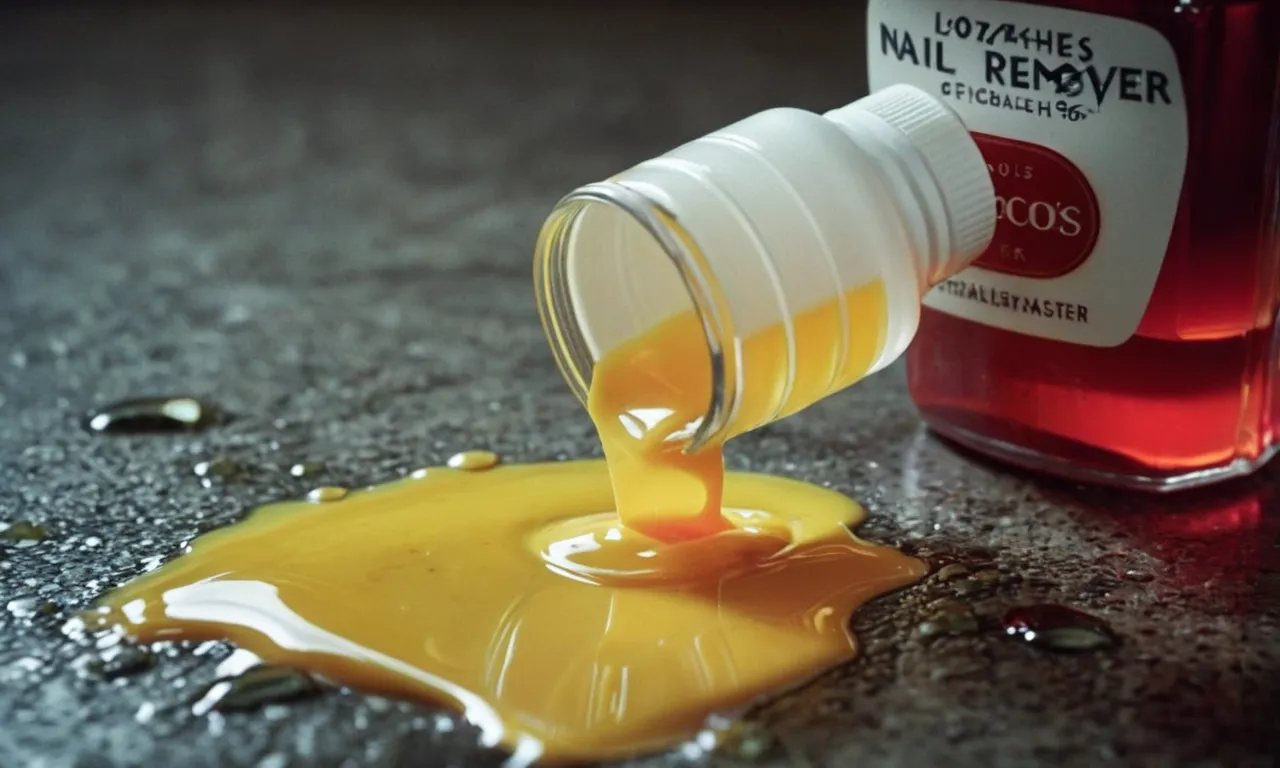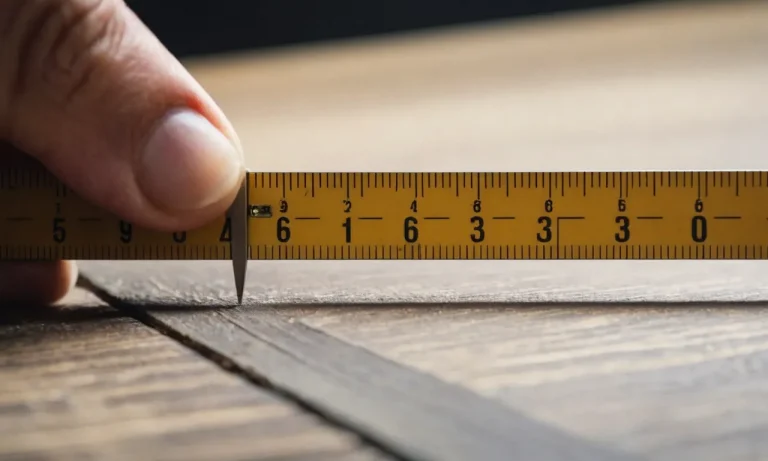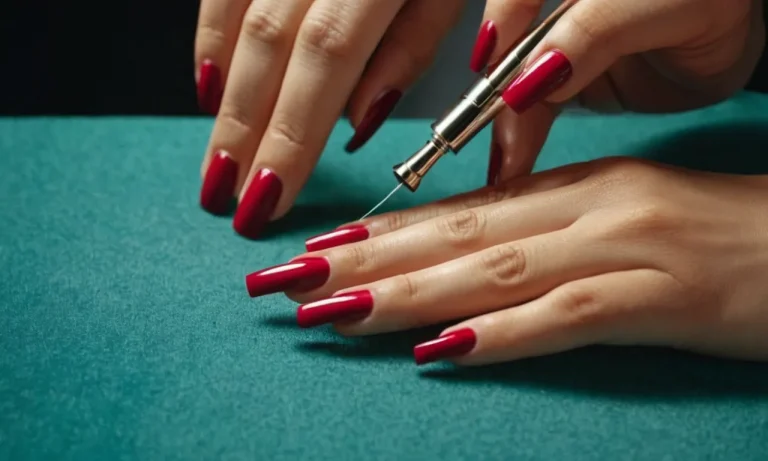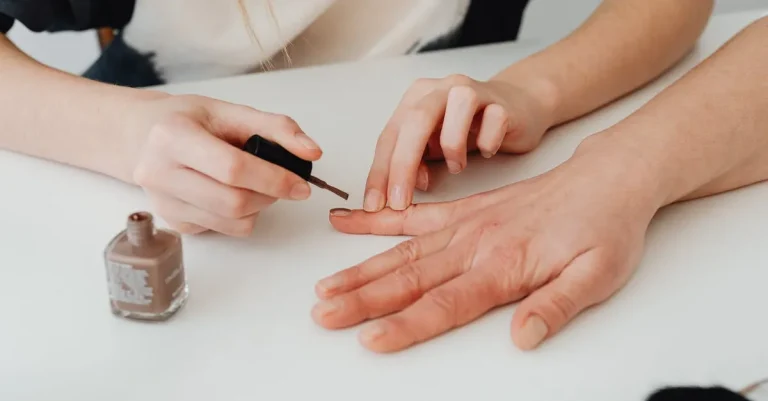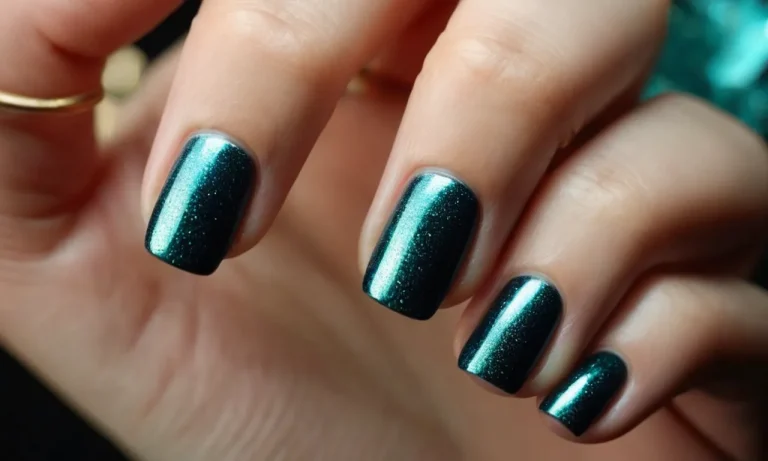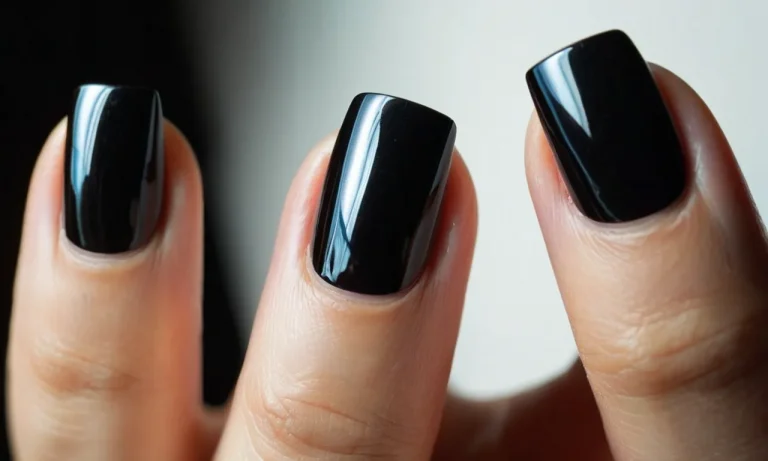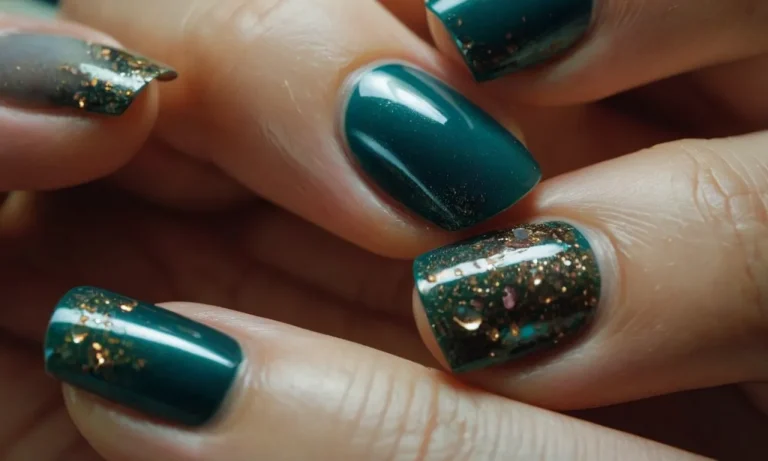Can Nail Polish Remover Remove Super Glue?
We’ve all been there – you’re doing a craft project or fixing something around the house, when suddenly your fingers get stuck together with super glue. Panic sets in as you try to pry your fingers apart, wondering how you’ll ever get the super glue off.
If you’re short on time, here’s the quick answer: yes, nail polish remover can be used to remove super glue from skin and other surfaces. The acetone in nail polish remover breaks down the cyanoacrylate compounds in super glue, allowing you to separate bonded skin and remove any super glue residue.
In this comprehensive guide, we’ll cover everything you need to know about using nail polish remover to get super glue off your fingers and various household items. We’ll discuss how nail polish remover works on super glue, compare different nail polish remover brands, go over removal methods, and provide tips for safe use.
How Nail Polish Remover Breaks Down Super Glue
Chemical Reaction Between Acetone and Cyanoacrylates
Nail polish remover contains a chemical called acetone, which is an effective solvent that breaks down cyanoacrylate adhesives found in super glues. Here’s a closer look at the chemical reaction.
Super glues contain chemicals called cyanoacrylates that rapidly polymerize and bond to surfaces when exposed to even minute moisture on a surface. Acetone dissolves cyanoacrylates by a chemical process called depolymerization, effectively breaking the bonded polymers back into their monomer form which destroys the cured glue.
Specifically, acetone’s carbonyl group reacts with cyanoacrylates. This causes the cyanoacrylate molecules to unzip into shorter polymers until it reverts wholly back into liquid monomer form. So while super glue hardens or cures in the presence of surface moisture, acetone depolymerizes and liquifies it.
Pure acetone works most effectively since water or other additives can slow down the breakdown. Using pure acetone also helps avoid damage to surfaces that may interact with ingredients like colors or fragrances sometimes found in commercial nail polish removers.
Effectiveness of Pure Acetone vs Diluted Formulas
Pure acetone is found in chemistry labs, some hardware stores, and pharmacies, usually marketed as 100% acetone with no additives. Using pure acetone provides the most effective concentration for debonding cyanoacrylate better than diluted commercial nail polish removers.
| Product | Typical Acetone Concentration | Super Glue Removal Ability |
| 100% Pure Acetone | 99%+ | Excellent |
| Salon-style Nail Polish Remover | 90%+ | Very Good |
| Commercial Nail Polish Remover | 50-90% | Moderate |
| Nail Polish Remover Pads | 15-50% | Low |
As shown, pure acetone works the fastest at dissolving super glue and cyanoacrylate adhesives off surfaces. Even salon-grade acetone nail polish remover over 90% concentration works very well too. Drugstore removers typically contain 50-90% acetone and may take more applications.
Pre-soaked pads have the lowest concentrations and are least effective for super glue removal.
The key is using acetone formulas with higher concentrations closer to pure acetone’s 99%+ chemistry solvent properties to break down cured cyanoacrylate glues through chemical depolymerization. This allows the best breakdown of super glue back into liquid monomer form to debond it from surfaces.
Comparing Nail Polish Remover Brands and Formulas
100% Acetone vs Acetone Blends
When it comes to removing super glue, 100% acetone is the most effective option. Pure acetone is able to break down the cyanoacrylate polymers in super glue, allowing you to easily remove any unwanted glue.
Acetone blends or diluted acetone contain less acetone, so they may not work as quickly or effectively on super glue. However, 100% acetone can be quite drying and harsh on skin, so an acetone blend may be a better option for removing super glue from skin.
Just be prepared to soak the area longer to fully break down the glue.
Gel vs Liquid Polish Removers
Both gel and liquid acetone nail polish removers can be effective at removing super glue. Gel removers cling to the skin better which helps keep the acetone against the glued area. However, liquid removers are better for dipping implements like cotton balls or q-tips into to apply to the glue.
In general, gels may be slightly better for removing super glue from skin while liquids can be better for precision removal. Just be sure to use a 100% acetone formula rather than a diluted one.
Additives to Avoid
When purchasing a nail polish remover to use for removing super glue, avoid formulas with added oils, moisturizers, and fragrances. These additives dilute the acetone concentration and reduce its effectiveness at dissolving glue.
Additives like aloe vera, vitamin E, and lanolin are marketed as skin-soothing agents in nail polish removers. However, they end up interfering with the acetone’s solvent properties. For best results, look for a 100% acetone nail polish remover without any added ingredients.
The Beauty 360 100% Acetone Nail Polish Remover sold at CVS is an affordable option.
Methods for Removing Super Glue with Nail Polish Remover
Using a Cotton Ball
One of the easiest ways to remove super glue with nail polish remover is to soak a cotton ball in the remover and gently dab it on the glued area. The acetone in the nail polish remover helps break down the cyanoacrylate in the super glue.
Keep dabbing and adding more remover to the cotton ball as needed until the glue starts to soften and lift away. This works great for getting super glue off your fingers or smoothing rough edges on projects.
Soaking in a Bowl
For removing thicker layers or larger areas of super glue, try soaking the item in a bowl filled with nail polish remover. Make sure the glued area is fully submerged. Let it soak for 5-10 minutes, checking periodically to see if the glue is dissolving.
The nail polish remover will seep into the glue and cause it to detach from the surface. This method works well for freeing glued body parts like fingers. Just be careful not to soak the area too long, as prolonged exposure to acetone can dry out skin.
Softening then Prying Apart
When super glue accidentally bonds two items together, nail polish remover can help separate them. Apply the remover liberally to the glued area and let it penetrate for 2-3 minutes. This will soften the glue. Then, gently twist and pull the pieces apart, little by little, to break the glue’s hold.
Keep reapplying the remover as needed to fully dissolve the glue. Be patient and don’t force anything or you may damage the items. This technique is great for un-gluing things like glasses frames, jewelry, toys, etc.
Scrubbing with an Old Toothbrush
For stuck-on glue in textured areas or small crevices, use an old toothbrush dipped in nail polish remover to scrub it away. The toothbrush bristles help agitate the glue to remove it faster. Dip the toothbrush in remover and gently scrub at the glue, adding more remover as needed.
The scrubbing action combined with the acetone will help dissolve and clear away the super glue smoothly. This works well for detailed glue removal on crafts, model kits, shoes, and more. Just don’t use a good toothbrush you still need for brushing teeth!
Tips for Safe and Effective Use
Test on a Small Area First
When using nail polish remover to take off super glue, it’s wise to first do a patch test on a small, inconspicuous area. Dab a little bit of remover on the glue and check for any skin irritation or damage. This helps avoid potentially painful or dangerous mishaps if you have a sensitivity.
Avoid Contact with Eyes
Be very careful to avoid getting nail polish remover in your eyes as it can cause severe irritation or even damage. Wear protective glasses if needed. Also avoid inhaling fumes directly as they can irritate nasal passages and lungs.
Watch for Skin Irritation
Acetone-based nail polish removers can dry out skin with repeated use. Check for redness, itching, stinging or cracking after using it on glued skin. Discontinue use if irritation develops. Try using moisturizer after to counteract drying effects.
Remove Quickly to Minimize Skin Damage
Don’t leave nail polish remover on super glued skin for too long. Quickly apply, let it soak in for a bit, then gently scrape off glue residue. Prolonged exposure could increase skin damage risk. The sooner the bond is broken, the better.
Consider Alternatives for Sensitive Areas
Avoid using nail polish remover on sensitive, damaged or abraded skin. The ingredients may cause stinging or burning. For fingers, toes or other delicate areas, try soaking in warm water or oil first. Checking with a doctor is wise if irritation occurs on sensitive skin.
Other Household Products That Remove Super Glue
White Vinegar
White vinegar is an effective super glue remover due to its acetic acid content, which breaks down the cyanoacrylate compounds in super glue. Simply soak a cotton ball in white vinegar and hold it against the glued area for 5-10 minutes.
The vinegar will cause the super glue bond to weaken so you can gently pry the items apart. Be careful not to get vinegar on surfaces that could be damaged by acidity. Anecdotal evidence on home improvement websites like BobVila.com suggests white vinegar works better than nail polish remover for removing dried super glue.
Rubbing Alcohol
Like vinegar, rubbing alcohol can dissolve super glue bonds. Pour some isopropyl alcohol over the glued area, let it soak for up to 5 minutes, and slowly work the pieces free. The alcohol breaks down the cyanoacrylate compounds.
Be very careful when handling rubbing alcohol and work in a well-ventilated area away from open flames or sparks. One tip is to soak cotton swabs in alcohol and wedge them into the glued seam to encourage seepage. Repeat soaking and wedging until you can separate the parts without force.
Rubbing alcohol is cheaper than some commercial glue removers.
Cooking Oil
Vegetable oil, olive oil, or another household cooking oil can loosen a super glue bond through gentle penetration. Apply a generous amount of oil where the glue dried, wait 10 minutes, then slowly work to free the parts, adding more oil if needed. The oil seeps into tiny crevices in the glue.
Like rubbing alcohol, cooking oil may take repeated applications and patient working before you see results. Cooking oil likely won’t fully dissolve super glue but makes it possible to slowly loosen the bond. Avoid tugging or twisting forcefully during this process.
WD-40
The popular lubricant WD-40 can remove dried super glue, but it may take hours rather than minutes. Apply WD-40 liberally to the glue, let it penetrate for an hour or more, reapply, and slowly work to free the bonded items by wiggling and twisting gently.
The lubricant molecules in WD-40 help separate the glue. Compared to white vinegar, WD-40 is slower but safer for household use. Avoid getting it on porous materials as oil stains can result. An informal BobVila poll found 73% of respondents had success using WD-40 for super glue removal.
Conclusion
As you can see, nail polish remover containing acetone can be highly effective at breaking super glue bonds and removing residue when used properly. Just be sure to take safety precautions, test small areas first, and limit skin contact time.
With the right nail polish remover formula and removal method, you can safely break super glue’s stubborn grip on skin, surfaces, and belongings.

